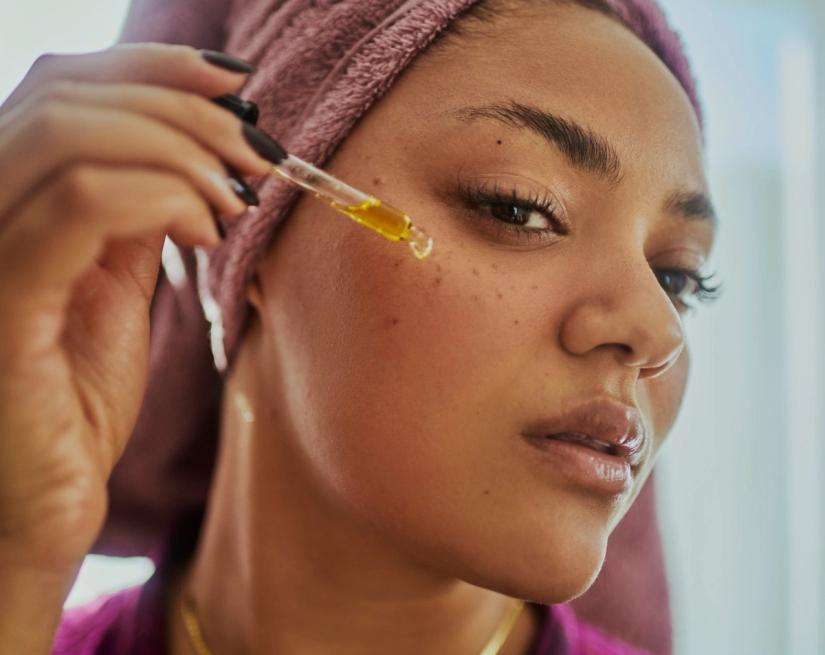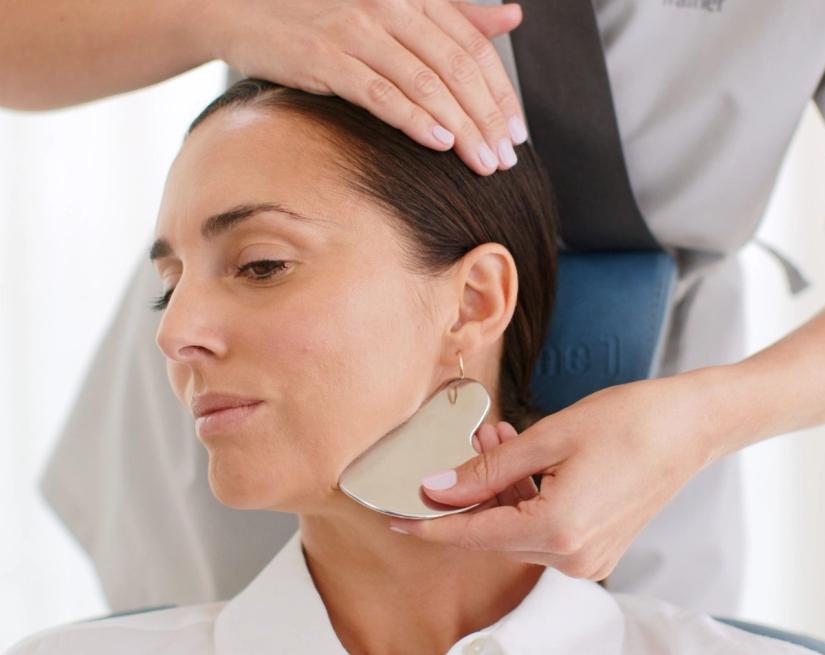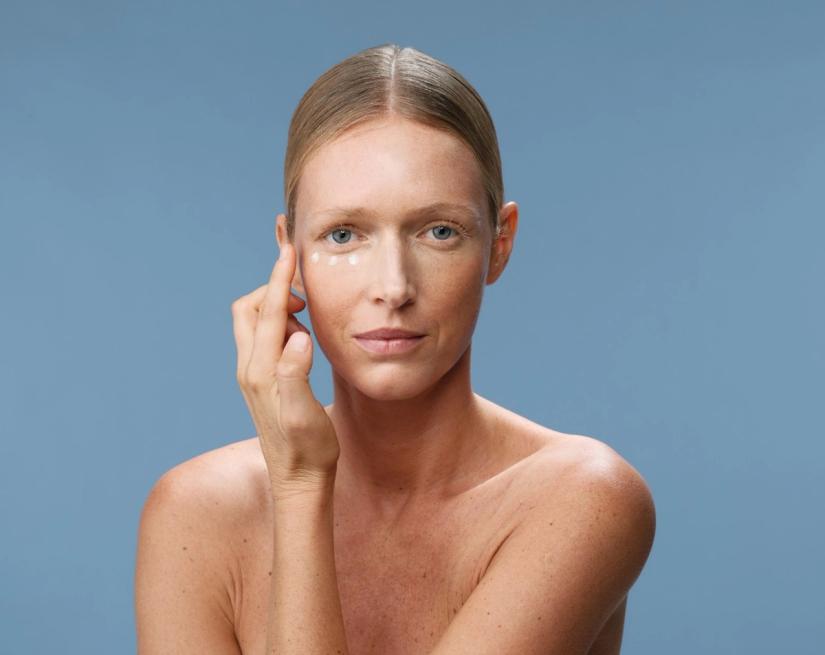skin care
How To Get Rid of Hyperpigmentation
Maria Giulia Simonazzi | International Training Manager
10 min read
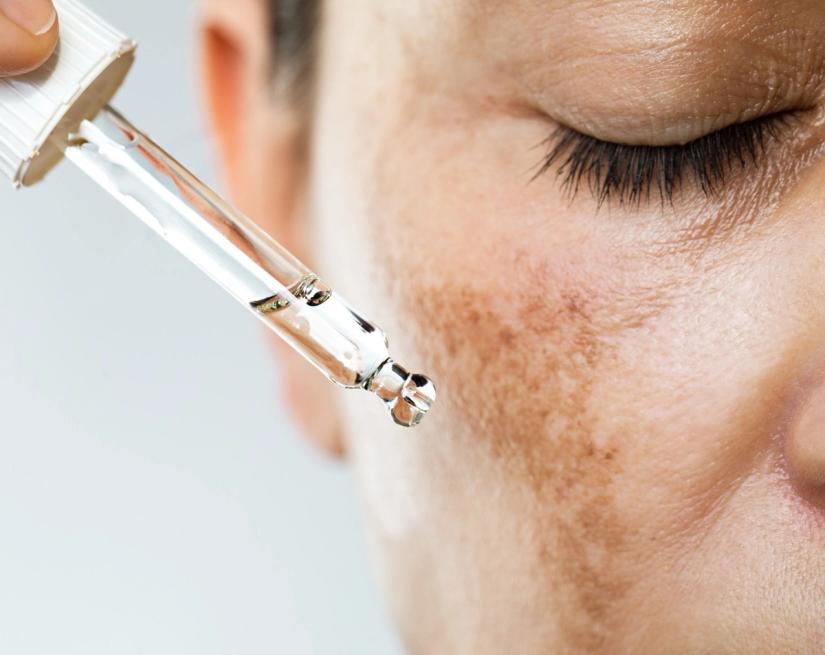
Have you ever noticed brown patches on your skin? If so, you might have experienced hyperpigmentation—a skin condition that causes darker patches to appear on the skin of the face and body. Hyperpigmentation is excess melanin production that causes dark spots on the skin. Every skin type can be affected by hyperpigmentation, even darker skin tones, though some people have more hyperpigmentation-prone skin than others.
There are several different forms of hyperpigmentation which affect varying layers of skin cells, so depending on which type you have, some treatments for hyperpigmentation will work better than others.
If you're noticing patches of skin that are darker in color than others, treatment options are available to even your skin tone. Keep reading to learn why hyperpigmentation occurs, which type of hyperpigmentation you're experiencing, how to reduce the appearance of discolored skin cells, and how to maintain your natural skin tone and prevent hyperpigmentation spots in the first place.
What Is Hyperpigmentation?
If we break the word “hyperpigmentation” down, we get hyper (which means excessive) and pigmentation (which means color). By definition, hyperpigmentation is excessive pigment production on the skin.
The pigment that impacts skin color is called melanin. When our skin produces more melanin than usual, people experience darker skin, skin discoloration, dark skin spots, or uneven skin patches, all of which fall under the umbrella of hyperpigmentation.
What Causes Hyperpigmentation?
Production of melanin pigment is our skin's response to trauma. Skin trauma can come in the form of a scratch, cut, or any sort of wound that breaks the surface of the skin. Skin trauma also includes sun exposure, because delicate skin is no match for the sun's intense rays. Excessive sun exposure can cause hyperpigmentation over time called sun spots.
Once the skin incurs trauma, it reacts by stimulating melanocytes, or melanin-forming skin cells, to protect itself from further damage. These cells rush to the surface of our skin when they're stimulated, leading to dark marks on the outer layer of skin, particularly in those with fair skin.
While some causes of hyperpigmentation are preventable, others are genetic. Some common causes of hyperpigmentation include:
- Sun exposure
- Acne
- Skin inflammation
- Certain medications
- Hormones
- Skin injuries
- Addison's disease
Different Types of Hyperpigmentation
Hyperpigmentation is an umbrella term that covers many types of conditions that result in darkened pigment. But each form of hyperpigmentation has a different underlying cause, which is why it's important to define which form you may be experiencing. Knowing the specific type of hyperpigmentation you're dealing with will help to determine the most effective treatment or active ingredient for improving the skin's condition.
Post-Inflammatory Hyperpigmentation
Post-inflammatory hyperpigmentation, which is sometimes called acne hyperpigmentation, develops as a reaction to inflammation. Skin inflammation often emerges from pimples, blemishes, acne, and conditions like eczema. It's also how our skin heals from wounds. You may think of these dark spots as acne scars.
This type of hyperpigmentation typically affects people who are prone to acne, but men, women, and people of all skin types are susceptible to post-inflammatory hyperpigmentation. These darkened spots can appear pink, red, or brown in color, and they can be found anywhere on the body, including the face.
Melasma Hyperpigmentation
Melasma is a type of hyperpigmentation that develops on skin as a response to hormones, genetics, medications, and/or sun exposure.
This condition is common in pregnant women and people with darker complexions—people with dark skin tones naturally have more melanocytes than people with lighter complexions. Melasma commonly develops as large patches or brown spots on the face, forearms, and neck. On the face, melasma typically appears around the nose, cheeks, and lips.
Sun-Induced Hyperpigmentation
Sun-induced hyperpigmentation describes a range of dark spots that appear as a result of sun exposure, including age spots, liver spots, freckles, and sun spots.
These spots can be brown or black, and they're commonly seen on the face and hands. People who are older and people who spend considerable time in the sun without sunscreen are prone to developing sun-induced hyperpigmentation.
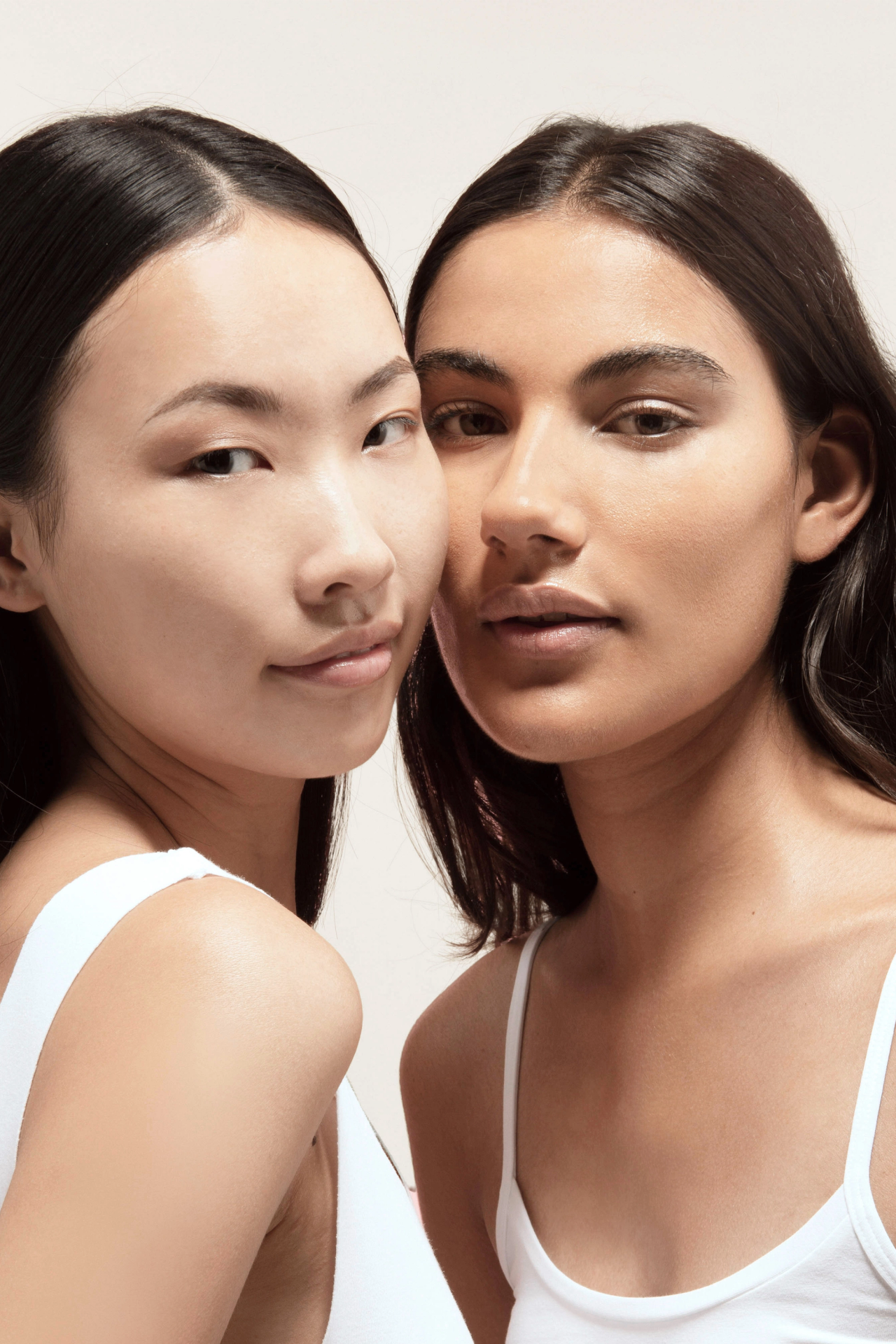
Treatment Options to Get Rid of Hyperpigmentation
Hopefully by now you can identify what type of hyperpigmentation you're experiencing. But how do you get rid of it, and fast?
Hyperpigmentation may be harmless, but it can make you look unhealthy, and some people may find it embarrassing. To get healthy skin that's even in color and texture and without blemishes, try these hyperpigmentation lightening methods.
Targeted Skincare Products
Some topical treatments are very effective at treating hyperpigmentation, no matter what type you have.
Retinol Products
Retinol works extremely well because it stimulates skin cell turnover. This means it tells skin cells to shed old cells in the outermost skin layer, which may be clogging your pores, and prompts them to generate new cells.
Post-inflammatory hyperpigmentation caused by acne and clogged pores is one of the most common types of hyperpigmentation, so clearing the pores and stimulating cell regeneration is a major key to lightening and evening the skin tone. In some cases, hyperpigmentation is only affecting the outer layer of skin cells. By stimulating these cells to slough off, retinol can lighten hyperpigmented skin.
Another way over-the-counter retinoids and natural retinol serums work to improve hyperpigmentation is by inhibiting tyrosinase, the enzyme responsible for melanin production. As retinol inhibits tyrosinase, it works on a cellular level to lighten the skin.
Vitamin C
If your skin is hyperpigmented, vitamin C should be one of the first ingredients you integrate into your skincare routine. Similar to retinol, vitamin C treats hyperpigmentation by inhibiting tyrosinase and, therefore, inhibiting melanin that causes discoloration, dark patches, and dark spots.
Vitamin C also naturally neutralizes free radicals, which can prevent hyperpigmentation from developing. Free radicals are the result of sun damage, and they lead to undesirable skin conditions like hyperpigmentation. Vitamin C is an antioxidant that fights free radicals and reverses the damage they cause to our skin.
Countless dermatologists recommend vitamin C for its brightening, lightening, and free-radical-neutralizing benefits. Adding a vitamin C booster into your skincare routine can even your skin tone, reduce and prevent hyperpigmentation, and counteract the effects of stress and aging at the same time.
Glycolic Acid
Glycolic acid, a substance derived from sugar cane, is an alpha-hydroxy acid found in many popular skincare products. Due to its ability to remove dead skin cells, it's highly effective at reducing hyperpigmentation.
When dead skin cells don't turn over to generate new cells, skin discoloration can occur. Glycolic acid works to stimulate skin cell turnover and purge the cells causing discoloration, all while cleansing pores.
Kojic Acid
Known to lighten the skin, even skin tone, and treat acne, kojic acid is a favorite skincare product found in many soaps, creams, and lotions. Like retinol and vitamin C, kojic acid inhibits tyrosinase, suppressing melanin production in the skin.
Studies have proven kojic acid to be an effective depigmenting agent with antioxidant activity that stimulates cell regeneration.
Aloe
Aloe is a safe and natural treatment for hyperpigmentation. Aloe contains aloin, a chemical compound that inhibits melanin production and prevents the development of pigmentation. Through inhibition of tyrosinase, aloin reduces brown spots and dark patches while treating the effects of sun damage on the skin.
Aloe extract is safe to apply topically on the skin, and it hasn't been known to produce any considerable side effects. This ingredient can be taken straight from the aloe vera plant by scraping off the gel found on the inside of aloe plant leaves, or you can apply a daily aloe gel moisturizer.
Professional Treatments to Repair Uneven Skin Tone
If you're not getting the results you'd hoped for through skincare, there are professional treatments available to treat your hyperpigmentation. It's always a good idea to get a dermatologist's opinion before scheduling an office procedure to treat hyperpigmentation.
Schedule a Chemical Peel
In a chemical peel, a dermatologist covers your skin with a chemical agent that exfoliates the uppermost layer of skin, removing it completely. This professional treatment can reduce the appearance of hyperpigmented skin, although it's not indicated for melasma and can actually make dark spots from this condition appear worse.
Get Laser Resurfacing Treatment
Laser treatment removes your outermost layer of skin with a laser instead of a chemical. This treatment stimulates skin cell turnover, removing dark skin cells and promoting the growth of new, properly pigmented cells.
Try Microdermabrasion Treatment
Aloe is a safe and natural treatment for hyperpigmentation. Aloe contains aloin, a chemical compound that inhibits melanin production and prevents the development of pigmentation. Through inhibition of tyrosinase, aloin reduces brown spots and dark patches while treating the effects of sun damage on the skin.
Aloe extract is safe to apply topically on the skin, and it hasn't been known to produce any considerable side effects. This ingredient can be taken straight from the aloe vera plant by scraping off the gel found on the inside of aloe plant leaves, or you can apply a daily aloe gel moisturizer.
How To Prevent Hyperpigmentation From Developing
While skincare products and office treatments can help minimize the appearance of hyperpigmentation, the best way to manage uneven skin is to prevent hyperpigmentation from occurring in the first place. Keep these tips in mind to reduce your chances of developing hyperpigmentation.
Wear Sunscreen Daily
Sun exposure is not only a major cause of unwelcome hyperpigmentation, it's also a major source of rapid aging, including wrinkles, fine lines, sagging.
To prevent sun damage, use anti-aging sunscreen every day to protect your skin from sun damage.
Opt For Natural Ingredients
When you're trying new ingredients and skincare products to rid hyperpigmentation, opt for natural solutions. While skin-lightening agents like hydroquinone are known to lighten skin pigmentation, these agents can be harsh on the skin and have been known to produce some uncomfortable side effects.
While some skincare products are designed for all skin types, others can be harsh on sensitive skin. As you try various hyperpigmentation relief methods, be gentle with your skin and pay close attention to the way it reacts to certain ingredients or treatments.
Natural ingredients like vitamin C are generally gentler and safer to use on your skin. Additionally, you can strengthen your skin and prepare it for treatment by using face masks and soothing moisturizers regularly.
Preventing Acne Hyperpigmentation
Sometimes, acne hyperpigmentation develops after a blemish disappears. Typically, this discoloration occurs because skin was injured after popping a pimple or scratching at a blemish, like with acne scars. Acne hyperpigmentation can also be the result of an overly harsh chemical acne treatment. Because this type of hyperpigmentation is the result of physical injury to the skin, it requires different treatment methods.
The best way to prevent post-inflammatory hyperpigmentation from occurring in the first place is to treat the source—acne-causing bacteria. Tea tree oil face serum is highly effective for acne-induced hyperpigmentation because tea tree oil kills off acne bacteria and prevents future acne bacteria from growing. Studies have shown that tea tree oil is an effective antibacterial treatment proven to significantly reduce acne lesions.
Additionally, to prevent bacterial growth, it's important to cleanse impurities from your skin every night. Leaving bacteria, debris, and pollutants on your face to build up over night can lead to some serious acne. A cleansing cream is key to purging daily scum and grime from your face and preventing hyperpigmentation before it develops.
Hyperpigmentation Treatments Improve Skin Over Time
If you're tired of living with unseemly dark patches on your face or skin, you don't have to be at the mercy of them forever. Try a targeted skincare treatment from Comfort Zone or get professional help with hyperpigmentation to achieve your best and brightest skin.
